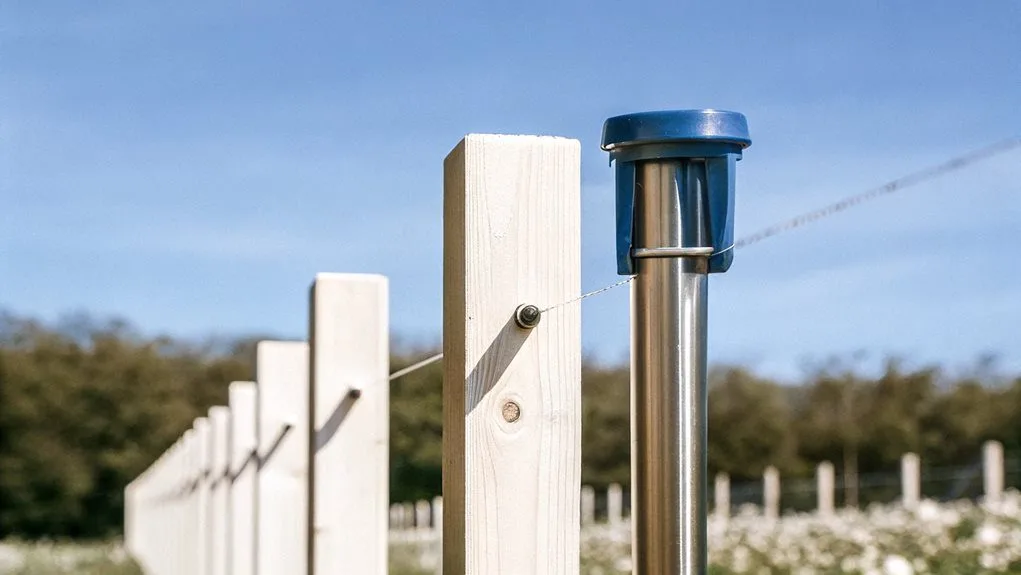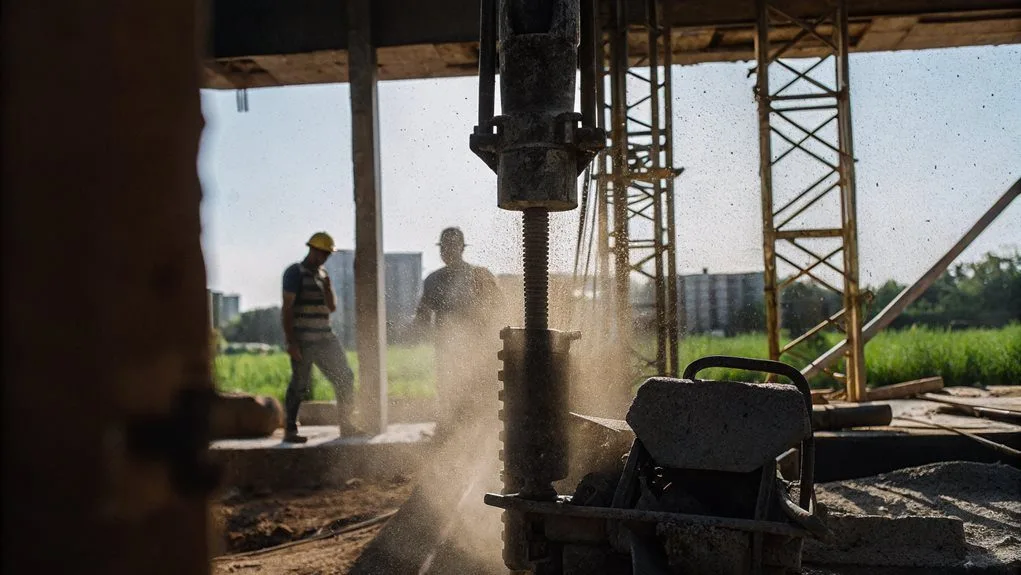So, you’re caught between a rock and a hard place—ride-on or pedestrian rollers, eh? If you’ve got big jobs like roads or airports, go for a ride-on; they’re powerful, speedy, and save you from labour nightmares. These machines can cover vast areas efficiently and provide the heavy compaction force needed for large-scale projects.
But if you’re stuck in tight spots or just tackling a small garden, a pedestrian roller’s your best mate. They’re compact and won’t break the bank, though no one wants to play tug-of-war with bulky equipment, right? Stick around, and you just might find the perfect fit for your specific needs and budget requirements.
Key Takeaways
- Ride-on rollers are ideal for large-scale projects like roads and airports, optimizing efficiency and productivity.
- Pedestrian rollers excel in smaller, confined areas and are perfect for projects like gardens or small roads.
- Consider the engine type; pedestrian rollers offer petrol and electric options for versatility and eco-friendliness.
- Cost and maintenance differ significantly; ride-on rollers are more expensive to purchase and maintain than pedestrian variants.
- For tight budgets and projects requiring fast, uniform compaction, pedestrian rollers are a cost-effective choice.
Key Features of Ride-On Rollers
You might think a ride-on roller is just a fancy way to flatten stuff, but there’s a lot more to it.
A ride-on roller is more than just a flattening machine—it’s a powerhouse that transforms your project.
First off, these beasts can handle drum widths from 81 to 213 centimetres. That’s right—whether you’ve got sandy soil or thick asphalt, they’ve got your back. And with power and weight varying dramatically, you can pick one that might just shake the ground beneath your feet. Additionally, the ride-on roller is designed to deliver maximum productivity on granular and mixed soils, ensuring you achieve exceptional results. Moreover, many models feature a smooth single drum design, which enhances the quality of compaction and minimizes surface damage. Not to mention, these machines can roll at higher speeds, making them essential for those gigantic projects where time is money. Sure, they’re comfortable, but let’s be real—who doesn’t love the thrill of bouncing around whilst you compact? With features like variable vibrations, you’ll be excelling at compaction like a pro in no time.
Key Features of Pedestrian/Walk-Behind Rollers
A walk-behind roller mightn’t be the flashiest of construction equipment, but don’t underestimate its charm.
Seriously, it’s like the reliable mate who always shows up. You’ve got options between petrol and electric engines—petrol is powerful, whilst electric’s just quietly doing its job and helping the environment. It’s got a sophisticated vibration system that crushes materials like a pro, achieving optimal compaction results with its integrated frequency and vibration stages.
Want some control? No problem! You can adjust speed and vibrations right from the handlebar—feels like you’re piloting a mini space shuttle. Plus, safety features like the dead-man’s handle are there to keep you from making your job a one-way ticket to casualty.
Just imagine: you might actually enjoy compacting soil with this compact dynamo! Not to mention, excellent density is achieved with minimal passes, making your work more efficient.
Project Suitability for Ride-On Rollers
Regarding project suitability, ride-on rollers aren’t just your average equipment—they’re the heavy artillery.
If you’ve got a massive road or airport project, they’re your go-to.
For large-scale road or airport projects, ride-on rollers are unbeatable in efficiency and effectiveness.
You need speed? They’ll cover more ground than you can in a coffee break.
Talk about productivity! Those tight deadlines don’t stand a chance.
Sure, they might make your budget a tad lighter upfront, but think long-term savings in rands.
You’ll save on labour costs whilst impressing clients with that flawless finish.
Just remember, you’ve got to keep up with safety protocols and mechanical checks.
Don’t skimp on training, either.
Trust me, you don’t want a novice behind the controls of this machine.
Additionally, a ride-on roller can effectively compact cold-laid bituminous pavements and loose soil layers, enhancing overall project quality. Also, they ensure consistent pressure for enhanced project durability by minimizing surface irregularities (for uniform pressure distribution).
Project Suitability for Pedestrian/Walk-Behind Rollers
How do you tackle those tight spaces where big machines just can’t squeeze in? With pedestrian rollers, of course!
These little champs shine in compact areas, whether you’re levelling soil in a garden or compacting asphalt for a small road. They’re cost-effective, so you won’t break the bank on smaller projects. Additionally, their compact size makes them ideal for working in restricted spaces, ensuring efficient operation without the need for larger equipment. Their ability to compact a variety of materials, such as sandy and cohesive soils, only adds to their versatility.
Plus, their ergonomic design means you won’t leave the job with aching hands. You’ll love how they manoeuvre around obstacles like a pro, even if uneven terrain tries to trip you up. And let’s be honest—nobody wants to spend all day waiting for results. With walk-behind rollers, you’ll see quick, uniform compaction that makes you look like you know what you’re doing.
Now, isn’t that satisfying?
Cost and Maintenance Considerations
When you’re deciding between pedestrian and ride-on rollers, the costs can hit you like a tonne of bricks. So, which one’ll break the bank?
Ride-on rollers start at nearly R361,000. Ouch! You could basically go on a mini-holiday instead.
Hiring? A pedestrian roller’s about R1,560 per week, whilst a ride-on will whisk you away for up to R3,590. That’s like choosing between a cosy meal and a gourmet feast.
Don’t forget maintenance—ride-ons need more love with engine checks and frequent servicing, costing you even more over time.
Yes, they might last longer, but do you really want to gamble your savings?
It’s a lot to ponder. Pick wisely; your wallet will thank you!
Conclusion
So, you’ve got choices: ride-on or pedestrian rollers. It’s like picking between a cozy sofa and a standing desk—depends on what you’re tackling. If you’ve got a big area and want to sit back while the machine does the heavy lifting, go for the ride-on. But if you’re after precision and like to stroll while working, the walk-behind is your buddy. Just remember, every option has its quirks. Choose wisely, or you might end up rolling in circles.






